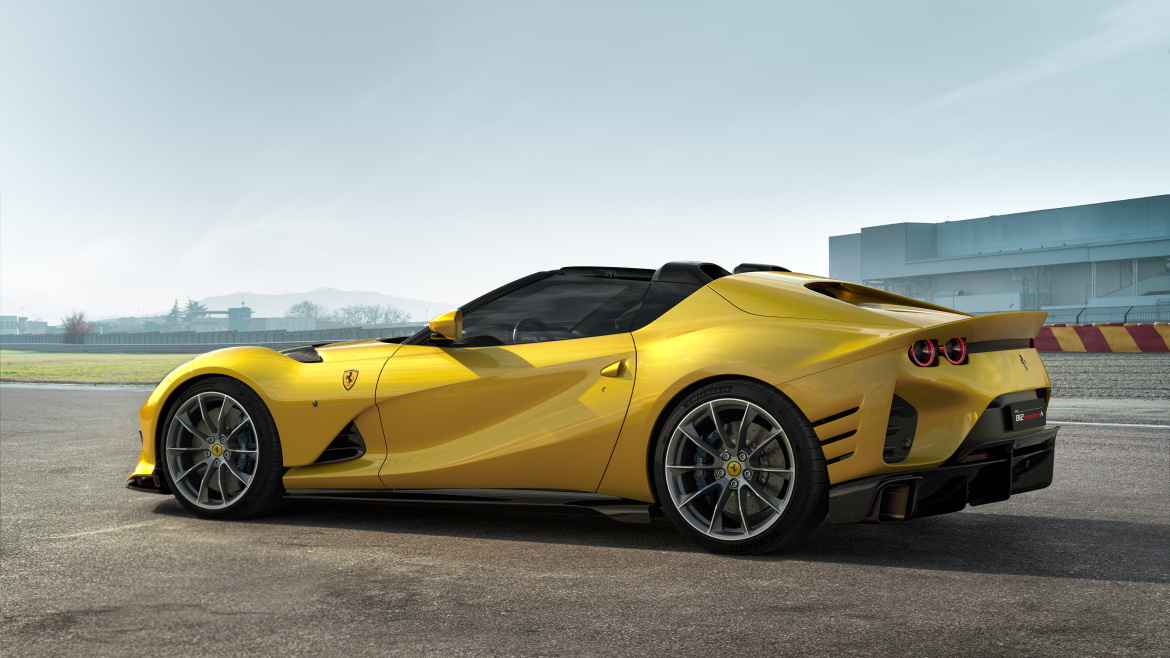Based on the 812 Superfast, the new Ferrari 812 Competizione is a limited edition model also designed with Targa architecture (812 Competizione A), in homage to the Cavallino’s open-top tradition. Dedicated to a select group of Ferrari collectors and purists, this pair of cars focuses on top performance without compromise. Innovative technological concepts applied to the engine, vehicle dynamics and aerodynamics have made it possible to reach new performance heights. The car is powered by the 830 hp 6.5 V12.
Designed by Centro Stile Ferrari headed by Flavio Manzoni, the 812 Competizione is a car with a strong personality, clearly distinguished from the 812 Superfast in its proportions and formal balance. The technical modifications made have allowed the designers to give the car a new connotation through themes that enhance its architectural layout, sculptural forms and sporty inclination. Among the distinctive elements of the 812 Competizione is the front bonnet with a transverse notch into which the carbon fibre blade is inserted. This solution has made it possible to conceal the air vents of the engine compartment, increasing its active surface area.
The most distinctive aesthetic element of the 812 Competizione is the replacement of the glass rear window with a monolithic aluminium structure whose sabre-like cuts increase aerodynamic efficiency by producing a continuous ridge effect that emphasises its sculptural form. The appearance of the rear spoiler is imposing: the transom, although higher, appears very wide – almost horizontal – and there is a perception of an amplified rear stance. The ends of the spoiler intersect the rear wings, highlighting the muscles in a reference to iconic Ferraris like the 330 P3/P4.
The interior architecture of the 812 Competizione remains faithful to that of the 812 Superfast in its general perimeters and the main interfaces of the dashboard and door panel, including the characteristic tuning fork motif. A formal and substantial lightening of the panel accentuates the sportiness of the cabin. The stowage compartment appears almost floating in relation to the panel’s supporting structure; this solution guarantees not only lightness, but also formal and material continuity with the rest of the interior. Only a small appendage connecting to the grab rail has been retained as an armrest, creating a dynamic muscle on the panel.














